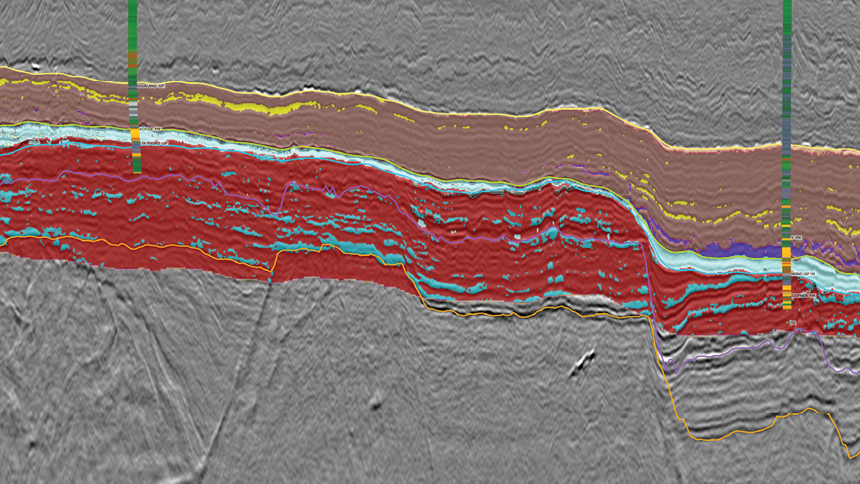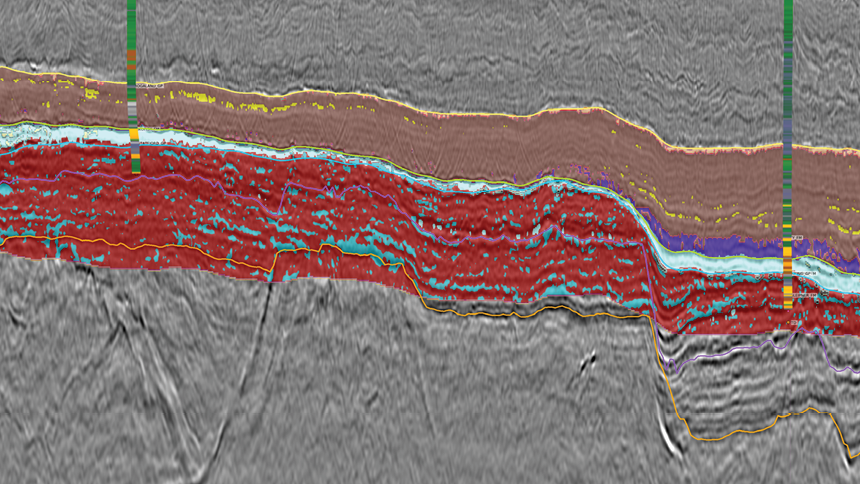- Directly inverts reservoir properties in the depth-domain
- Provides a unique workflow for asset de-risking
- Can be used to generate predictive distributions of useful reservoir quantities such as net-sand, hydrocarbon probability and thickness
- Useful statistical quantities such as P10, P50 and P90 values for all stochastic properties can also be calculated
- Solutions for both 3D and 4D applications, and also applicable to CCS / CCUS projects
A lithology and fluid prediction workflow that utilizes a Bayesian supervised classification scheme can make quantitative predictions based on inverted seismic data and depth-dependent, statistical rock physics models over the target zone of interest.
For Bayesian seismic inversion, PGS uses a layer-based stochastic inversion engine called Delivery (developed by CSIRO R&D). The prior model in Delivery is a trace local layer stack, with rock physics information taken from well-log analysis and layer times that are initialized from picks. This type of inversion is typically not used as an exploration tool, being more suited to reservoir characterization where an understanding of the uncertainties in key reservoir parameters is required.
PGS has extended its Bayesian inversion solution to 4D reservoir monitoring applications. Any number of 3D datasets (e.g., baseline + several monitor surveys) can be simultaneously inverted to produce changes in petro-elastic reservoir properties, their associated uncertainties, and synthetic data realizations. The results can increase confidence during history matching and updates to static reservoir models.
Bayesian Inversion Workflow
The workflow constructs a layer-based model from prior geological, petrophysical and geophysical information. This model is then inverted against the seismic data (single or multi, near and far, stack). Nearby and regional well data are used to build rock physics correlations of the elastic properties of the relevant end-member sands and shales.
The inversion then produces an ensemble of posterior models or realizations, the synthetics of which match the seismic data within the estimated noise level. Multiple stochastic model realizations can be drawn from the inversion posterior to create distributions of useful properties such as net-sand, N/G, saturation and porosity. Fluid probabilities and updated horizons can also be generated. Distributions allow P10, P50 and P90 values to be calculated for all stochastic properties in the model.
Contact a PGS expert
If you have a question related to our Imaging & Characterization services or would like to request a quotation, please get in touch.

